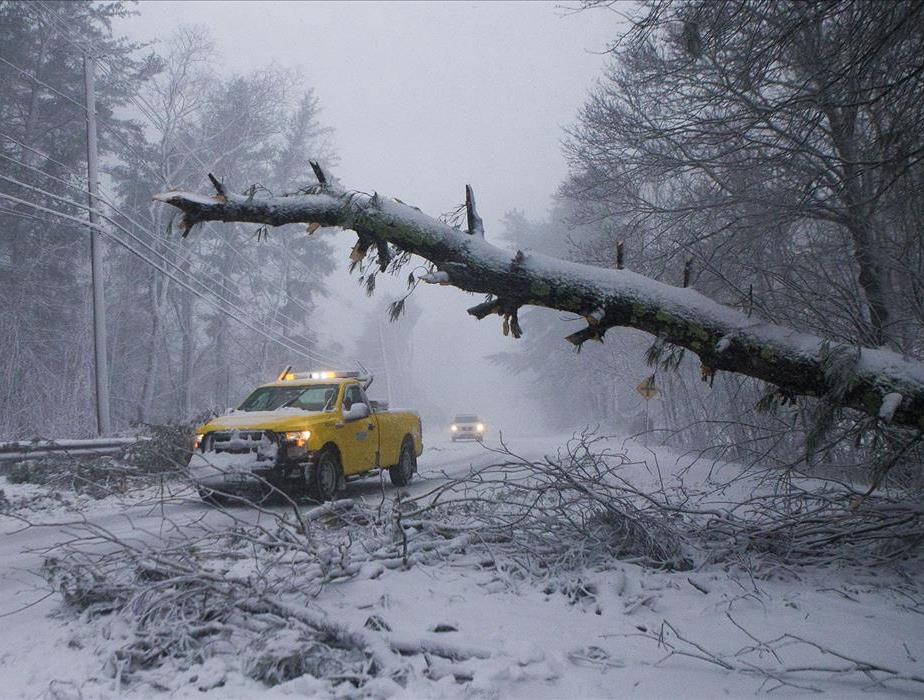What is a Nor'Easter?
1/23/2020 (Permalink)
What is a Nor’Easter?
It’s a word bantered around by meteorologists regularly, one delivered with a strong New England accent in the region: the “nor’easter.” It’s one of weather’s wackiest weather terms, but these storms are no joke. These infamous storms can combine torrential rains, strong storms, and fierce blizzards into one ferocious package that can knock New England out of power for days, sometimes weeks. But what is a nor’easter, and why is it so unique in the North American climate? Let’s take a closer look.
Defining a Nor’Easter
A nor’easter is a massive macro-scale cyclone that forms within 100 miles of the East Coast of the United States, traveling inward into the New England and Mid-Atlantic regions and stretching northward to the Atlantic-facing coast of Canada. They take their name from the robust and relentless northeasterly winds that blow them ashore.
Although nor’easters can occur any time of year, meteorologists typically expect around three each year, most frequently between September and April. In the winter months, a nor’easter can be particularly deadly. The Mid-Atlantic and New England regions are crowded with cities including Boston, New York, Washington, D.C., and Philadelphia—all cities along the heavily populated Interstate 95 Northeast Megalopolis—that have major financial, political, and policy influence over the entire country. In October of 2012, a major nor’easter shuttered Wall Street for only the second time in a century.
How Nor’Easters Form
These storms draw freezing air from the Arctic air mass, which presents a dangerous contrast to the warm air from the oceanic Gulf Stream ocean current coming up from the tropical Atlantic. As this very cold and dry air rushes southward and collides with the warm Gulf Stream current, intense low pressure develops. This low pressure increases the surrounding pressure between the two systems, causing the different air masses to collide at a faster speed. When the difference in temperatures between the two masses is greater, so is the storm’s instability, turbulence, and severity.
Nor’easters are characteristically accompanied by very heavy rain or snow, and can cause severe coastal flooding, erosion, hurricane-force winds, and blizzard conditions. Until the nor’easter passes, thick low-level clouds often blot out the sun. On rare occasions, such as the North American blizzard of 2006, the center of the nor’easter can take on the circular shape of a hurricane or a more traditional cyclone.
However, nor’easters differ from tropical cyclones in that they are cold-core low-pressure systems that thrive on cold air, while tropical cyclones are warm-core low-pressure systems that thrive on warm temperatures.
Tracking the Path of Nor’Easters
There are two primary ways a nor’easter can develop. The first develops along the Gulf Coast or East Coast and tracks northward up the East Coast; meteorologists consider this formation a “classic” nor’easter or “Miller Type-A” storm. In the second scenario, the storm originates in the Midwest and slides east towards the Appalachians. Once it strikes the mountains, the storm loses its low-pressure center, but the low-pressure system redevelops along the East Coast and rides up the coast just as a classic nor’easter would track.
If a nor’easter threatens your community, be sure to take the proper steps to prepare. These steps may include stockpiling at least three days of food, water, and other necessary provisions, as power may be down for days due to strong winds and ice-laden branches knocking down power lines. If roads become snow-covered or flooded, stay off them until they are plowed or flooding subsides. It is best to stay home or shelter in place until the nor’easter passes. Conditions can change quickly during these fast-moving storms and you don’t want to be stranded on an unsafe road, unable to get home.
If you experience any damage from a nor'easter call SERVPRO of Milton/Braintree at 617-774-8583 where we can make it like it never even happened.
Elias Urizar
Business Development






 24/7 Emergency Service
24/7 Emergency Service
